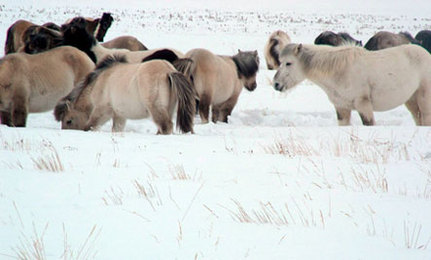Neuroscientist Jaak Panksepp from Washington State University has studied the high-pitched vocalizations of rats and found they have their own form of laughter. Called ultrasonic vocalizations, these noises are heard frequently during rats’ play time. Panksepp wondered if the noises he had been hearing them make could be similar to human laughter. He tried tickling their bellies and observed they made the same vocalizations when tickled, which indicate pleasure.
“Every place in the pathway that we stimulated, we got a chirp.That’s the gold standard that this vocalization is associated with a big reward,” Panksepp said. (Source: the-scientist.com)
This rat laughter could be the first scientific measurement of positive affect, or pleasure, in animals other than humans. Pankseep explained insights from the rat play and laughter research could help improve models for treating human psychiatric disorders.
A psychology professor at the University of Tennessee, Knoxville Gordon Burghardt says he has observed play in animals as something they need, and is not limited to dogs, cats, and primates. He is one of the first researchers involved with defining play in both humans and animals. The basis of his definition is,”Play is repeated behaviour that is incompletely functional in the context or at the age in which it is performed and is initiated voluntarily when the animal or person is in a relaxed or low-stress setting.” (Source: USnews.com)
He said he had a breakthrough moment observing a fifty-year old Nile soft-shelled turtle playing with a basketball while swimming in a zoo enclosure. According to him, play has benefits such as learning skills, maintaining physical and mental fitness, and improving social relationships. These benefits can be for animals and humans. He believes studying play in animals can yield information that is also relevant and helpful for humans. For example, research focused on rats has provided some insights which are involved in using play for lessening attention deficit hyperactivity disorder (ADHD) in children.
In some research contexts, it appears play was overlooked because it stopped once they were tested, “a number of studies did just that — raising rats and monkeys in social isolation so they could not play – fight, or confining young ungulates to small spaces so they could not gallop and frolic,” says behavioural ecologist Lynda Sharpe from South Africa. (Source: the-scientist.com)
It used to be thought animal play was for developing physical skills in juveniles to help them be better hunters and to defend themselves. Currently, the thinking has shifted more toward play as a method of preparing the animal for stressful situations. The notion is called “training for the unexpected,” meaning that play allows an animal to become acquainted with a variety of situations and sensations before the actual event takes place.
Adapted from an article by Jake R.





